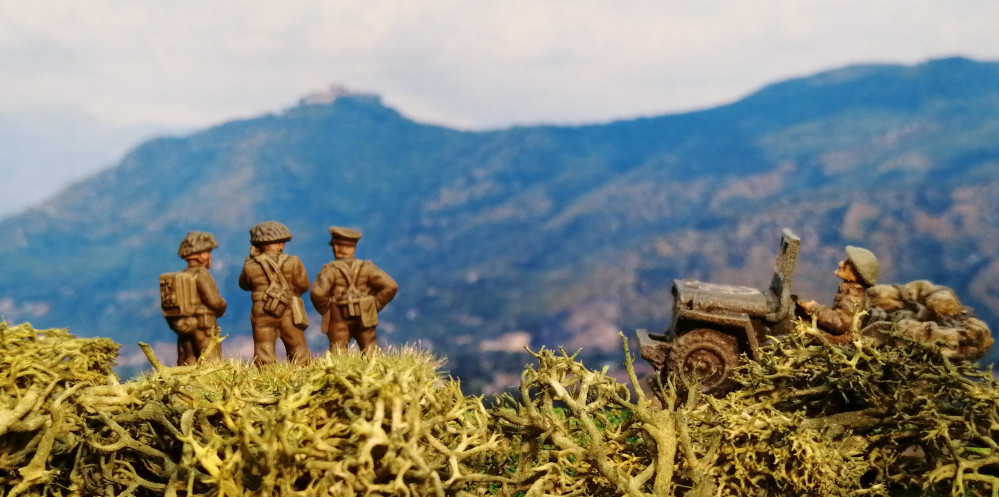
75th Anniversary of the Battle of Monte Cassino and Northern Italy (Gaming The Battles)
Monte Cassino - 1st Battle
It was 75 years ago today, 17th January 1944, that Allied troops launched their assault on Monte Cassino. It was to be a bloody, brutal battle lasting four months. This project pays respect to those who fought there and the sacrifices made all those years ago.
Field Marshal Albert Kesselring had been instructed by Hitler to build a defensive line South of Rome, later called the Gustav Line. The topography was well suited to defence with rugged hills and the Apennine Mountains running through the centre of the country. The Western part of the Gustav line was anchored around the 6th Century Benedictine monastery built atop Monte Cassino.
From this high vantage point, the German defenders overlooked the Liri valley and Route 6, the primary route from Naples to Rome. The Allies had to take this stronghold before they could advance further. At the foot of the hill lay the small town of Cassino, which linked to a small road that snaked up the side of the hill to the summit. On the Western side of Cassino lay the railway station, again connecting to Rome in the North as well as to Naples to South. Just South of Cassino, flowing East to West was the Rapido river. This aptly named river often burst its banks with flood water maker the surrounding ground near impassable. Despite being only 10m wide, it offered a difficult obstacle and one that the German defenders had built into their defensive plans. Downstream, the Rapido became the Garigliano river which joined the Liri river South West of the town of Cassino.
The German 14th Panzer Corps and had set about building a formidable defence. Much of the banks of the Liri and Rapido rivers had been mined while barbed wire entanglements lay in wait to slow advancing troops. Machine gun nests and bunkers covered these approaches. Buildings in the town had been converted into small fortresses while overlooking this, troops, machine guns and mortars lay dug in around the slopes of the hill.
Despite the German defenders and the presence of Allied troops, the ancient monastery was still staffed with a few monks who had refused to leave despite advice to the contrary. The Germans had agreed with the Pope in Rome to not use religious buildings in their defence and so the monastery itself had not been fortified.
First Battle Monte Cassino
US 5th Army, commanded by Lieutenant-General Mark W Clark, was initially tasked with capturing Monte Cassino and breaking through the defensive line. He drew up plans that required flank assaults followed up by a frontal assault on Monte Cassino. In conjunction with the Monte Cassino assaults, a beach landing further North at Anzio was planned. The idea being to either draw German reinforcements in Rome South to the Gustav Line, making the Anzio landings more likely to cut off the troops at Monte Cassino or, to force the reinforcements to react to the Anzio landings and make a break through at Cassino more likely.
5th Army had only arrived at the Gustav Line on 15th January but were forced to move quickly as landing boats for Anzio were only made available until early February. After this time, the landing equipment was required back in the UK to prepare for Operation Overlord. This rushed approach was not ideal; 5th Army had endured a particularly attritional advance up the West coast from Naples and had not had time to reorganise or rest. Optimism among the Allied forces was not high when the assault was launched.
Britsh X Corps, positioned on the West flank of the 5th Army, close to the coast, launched the assault, with two divisions crossing the Garigliano on the 17th January, 1944. They quickly established a beach head on the Northern side of the river and were able to dig in despite heavy resistance from the German 94th Infantry Division. A further British Division successfully crossed two days later however the three British Divisions lacked the man power and support to push further inland. It did however cause the Germans to request reinforcements and 29th and 90th Panzer grenadier Divisions were sent from Rome to bolster the defences. By 21st January, the German reinforcements had stabilised the bridge head and the British made no further progress. British X Corps suffered around 4000 casualties in this opening assault.
Further inland, to the East of Cassino, Moroccan and Algerian troops of the French Expeditionary Corps advanced into the mountains and engaged the German 5th Mountain Division. In atrocious weather and freezing conditions, the North Africans fought bravely and made good progress. However, a lack of men, support and supplies left many soldiers with frostbite and trench foot and coupled with the bitter fighting, the assault eventually ground to a halt on 31st January.
With the flank assaults well under way, the main central assault started after sunset on 20th January. The 36th (Texan) Infantry Division sent elements of the 141st and 143rd Infantry Regiments across the Garigliano river just down steam of the town of Cassino. The 15th Panzer Grenadiers had prepared their defences well and the 36th suffered heavy casualties. Supporting armour was trapped on the Southern side of the river unable to cross the thick mud caused by the flood waters. This left the Infantry exposed to counter attacking tanks and self propelled guns.
The 143rd Infantry were forced back over the river by mid-morning on the 21st and the 141st were barely hanging on. The assault was renewed on the evening of 21st and both divisions managed to cross two Battalions with the 141st managing to advance almost a kilometre from the banks of the Garigliano. However, as sun came up on the 22nd, the 36th were left horrible exposed and were cut down by the German counter attacks. Barely 40 men of 141st made it back to the Allied side of the river. Major General Walker, commander of 36th Infantry Division decided not to commit his final Regiment to the attack but rather call off the assault. In just two days, the 36th had lost over 2000 men and had been reduced to a third of its fighting strength. One US Officer reported ‘I had 184 men… 48 hours later I had 17. If that’s not mass murder, I don’t know what is.’ The horrific losses became the focus of a Congressional Inquiry after the war.
On 24th January, a little up river of Cassino, US 34th Infantry Division launched their assault. Like the 36th, they also found the defences on the other side of the river well prepared and suffered similarly but managed to make slow progress up the steep, broken hills. During the day, any movement among the rocks and broken buildings was raked by German machine gun fire and infantry men were left inching forward, feeling with their finger tips for trip wires and mines. The steep gullies offered little protection and the Germans had laced the thick bushes with mines, booby traps and barbed wire. Despite the formidable defences and the freezing weather conditions, the 34th managed to continue to push forward along the hills, looping around the back of Monte Cassino.
By early February, the 34th were just over 1km from the monastery and over the following few days got within 4oom. Monks inside the monastery observed a US patrol reach the walls of the monastery and exchange fire with the defending 1st Fallschirmjager. For a further three days the 34th tried to break through and take the final hill, known as Calvary Mount but without success. On 11th February, US troops were withdrawn, having fought to exhaustion.





























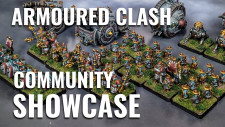











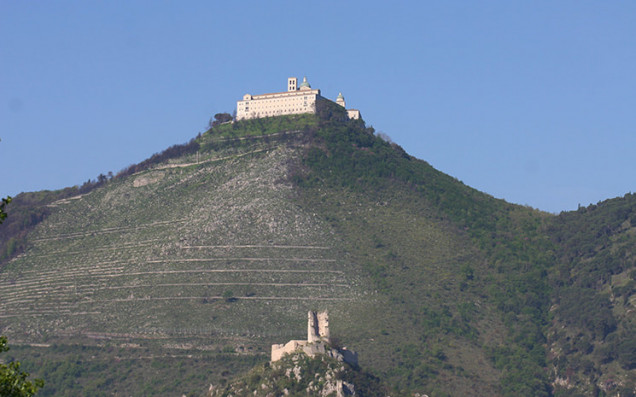
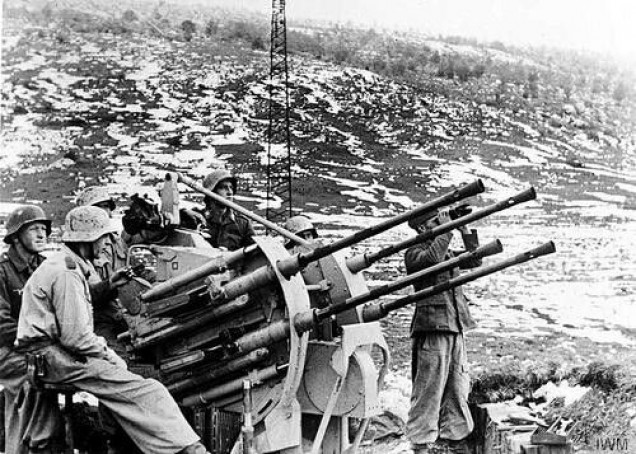
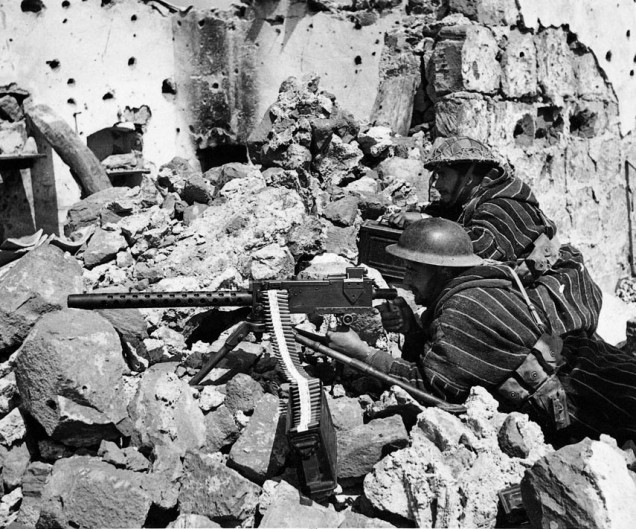
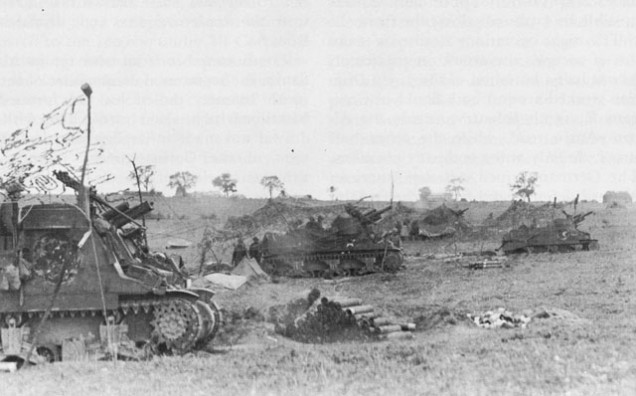

































Leave a Reply